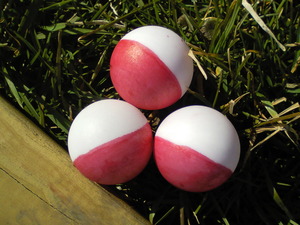The basic design of Earth is quite simple to understand. Think of the layers involved in an apple. The earth has layers that are similar to an apple. The earth has a core, an inner core that is solid and an outer core that is liquid. This core is what gives us our very necessary magnetic field. The next layer is the mantle. The mantle is a very thick, solid layer. The outer layer of the earth is the crust. There are two types of crust. There is the oceanic crust, which is rather shallow but heavy. It is primarily made of basalt (from volcanic output). The other type of crust is continental crust. It is much deeper, but lighter than oceanic crust. That is why most continental crust is above sea level. The surface of Earth is not solid as it appears, but broken into plates that are in constant movement.
Hotspots are random openings in the plates that are mysterious in nature. There is not an exact theory that accounts for them, although there are some hypotheses being studied. One popular idea that truly has merit says that Earth has had large impact events that shake the earth so severely that the result is the random openings that are referred to as hotspots. These hotspots have been the source of many rapid changes in Earth’s history.
Hotspots are exactly what they are called. They are spots under the crust that push their way thru to the surface. Magma rises from the core of the earth to the surface without tectonic pressures like collision or subduction. This magma can cause changes in the elevation of the land on top of it. The pressure and heat from the magma can force plates to rip apart, creating new plates and altering old ones. The amount of gases that are released have altered the climate of the world, as well as, caused the extinction of many species due to the rapidness of the climate changes.
Hotspots have caused plates to rip apart, landforms to develop as well as mass extinctions in Earth’s history. However, hotspots are not a thing of the past, there are still some that are active in the earth today. Two that should be familiar to Americans is the Hawaiian Hotspot and the Yellowstone Hotspot. There is also a hotspot in Iceland and another one in Africa.
Hawaii owes its existence to the hotspot underneath it. Keeping in mind that hotspots are stationary, Hawaii shows the movement of the Pacific Plate. The southern most island of Hawaii is the newest formation from the Hawaiian Hotspot. The island chain shows the track of the Pacific Plate. Mt Kilauea is where the magma from this hotspot is currently reaching the surface. As the plate continues to move new islands will form and old ones will erode away. Notice that the islands to the north are smaller, this is because they are much older.
The Yellowstone Hotspot gives cause for some alarm. There are evident signs that show the hotspot is still active. There has been a noted elevation change in the giant caldera, which was the opening of a previous eruption. Calderas are formed when the top of a volcano caves in after an eruption. A rapid increase in earthquakes in the area has also been noted. Both of these things are being observed consistently and fluctuate in frequency and amount of change. The important thing to know is that there are changes. Yellowstone, unlike Hawaii, has massive explosions. Hawaii has more of a slow leak. Yellowstone is worthy to be feared. An eruption would easily cover half of the United States in ash, not to mention the effects it would have on global climate.
Does the likeliness of an eruption seem to be prevalent? Yes. Will it be soon? That is much harder to answer. The historical evidence says that Yellowstone erupts about every 600,000 years. Well, that means, that Yellowstone should have erupted 40,000 years ago. So, it is overdue, when an average is being used for scale. However, 40,000 years in the earth’s history is only a yawn. It is likely that the changes we are seeing are showing the rise and fall of magma under the crust. These changes are likely precursors to a larger event. However, there is no way to measure what precursors, or how intense those precursors will be before an eruption might occur. This is difficult, and often not possible to do with much smaller scale volcanoes, although the eruption at Mt Pinatubo was accurately predicted.
Yellowstone has erupted several times over the course of time. Studying the chain of dormant volcanoes left behind the hotspot gives a record to eruption patterns and plate movement over time. The North American Plate moves approximately 2-2.5 cm per year. The record also shows that heavy ash from previous explosion have reached as far as southern California and as far east as the Mississippi River. There is only historical evidence available to study the eruption style of Yellowstone. No one can say for certain when Yellowstone will let loose again, only that it will.
Hotspots are notably worthy of further study. They are among the more dominant forces at work in our earth. They account for both modern and historical change in the earth. It only makes sense to learn as much as possible about them.



